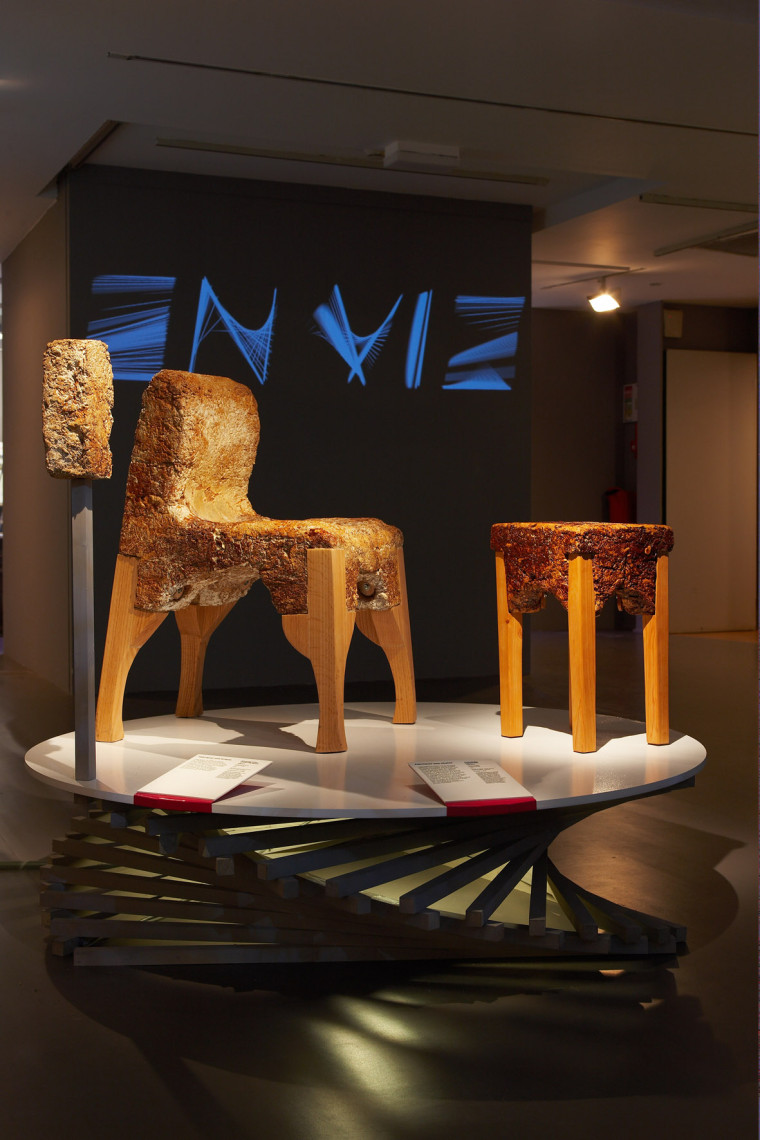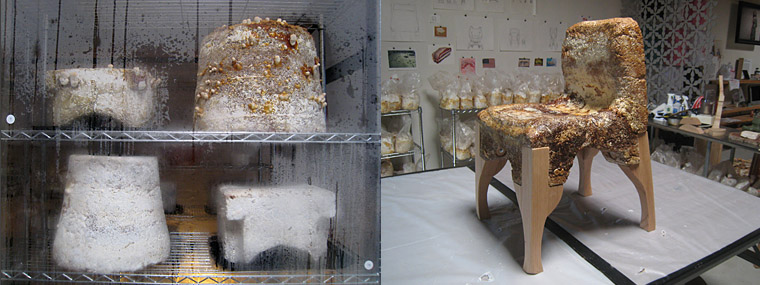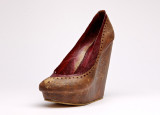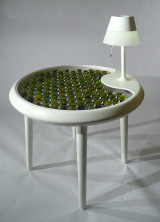To make a chair
Yamanaka Furniture

Phil Ross
The projects I work on are driven by a life-long interest in biology, technology and the greater living environment. While I was terrible in high-school science and maths, my education emerged from a wide engagement with materials and practices. Through my work as a chef, I began to understand biochemistry and laboratory methods; as a hospice caregiver I worked with life support technologies and environmental controls; and through my interest in wild mushrooms I learned about taxonomies, forest ecology and husbandry.
In the early 1990s I began growing a series of sculptural artworks using living fungus as a primary material. These artworks were created by infusing live fungal cells into a pulverized cellulose based medium (sawdust).
Fungal tissue will bind, solidify and harden into any chosen form, and, once dried out and processed, becomes a lightweight, strong material.
The cellulose serves as both food and framework for the organism to grow on, and within a week this aggregate solidifies as a result of the fungi’s natural tendency to join together smaller pieces of its tissue into a larger constituent whole. Fungal tissue will bind, solidify and harden into any chosen form, and, once dried out and processed, becomes a lightweight, strong material. With this process I can make simple modular bricks to construct a shelter (see ‘Mycotecture’ project), or, as presented here, a range of chairs and tools.
Courtesy of The Workshop Residence in San Francisco.



